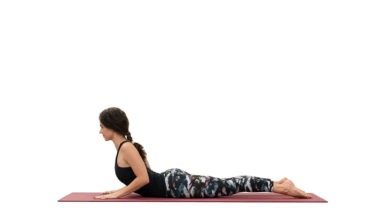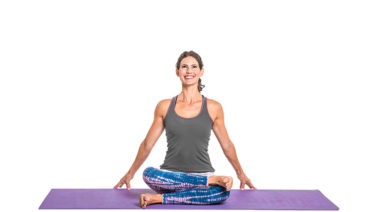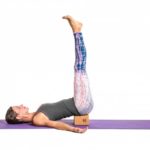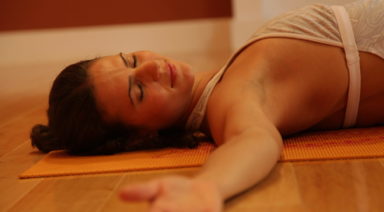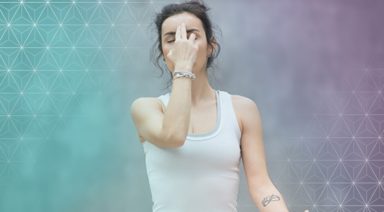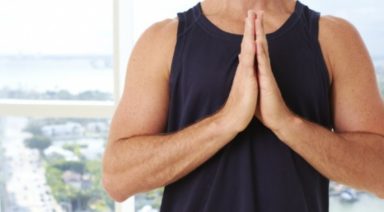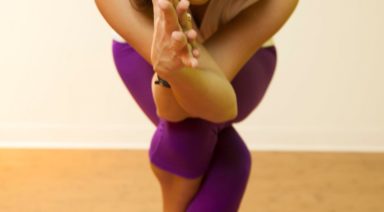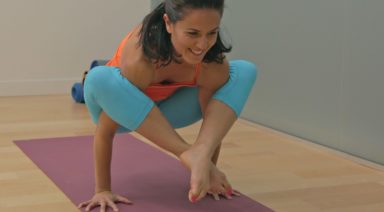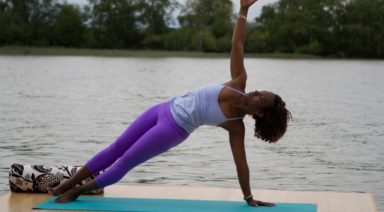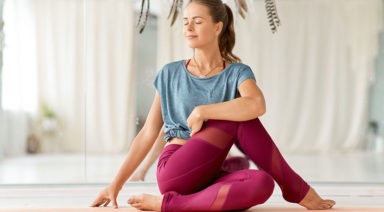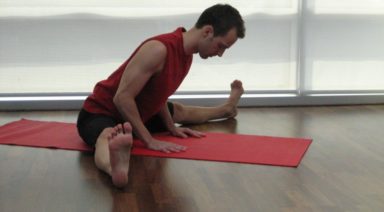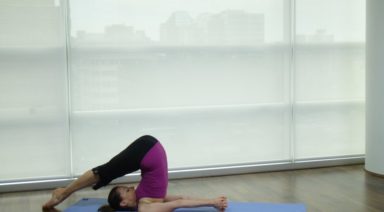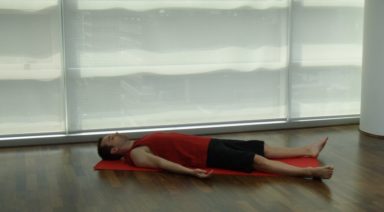Vrksasana: Tree Pose

ADJUSTMENTS | BENEFITS | SEQUENCING | SANSKRIT | STEPS
Vrksasana (vrik-SHAHS-ah-nah) is a deceptively challenging pose. While at first glance tree pose may seem easy, the combination of strength, balance, and flexibility required can take lots of practice. Never fear, props like a wall or a chair can come in handy while finding the balance point of the pose, and there are plenty of variations to fit everyone’s practice. This is a great pose to practice dristi (focused gaze) to help with balance.
Philosophy + Origin
In many Indian traditions, trees, specifically the ashoka tree, are symbols of love and devotion. Many cultures seek the knowledge of trees for healing, searching their branches, trunks, leaves, and roots for powerful medicine. Patient by nature, trees are quiet and steady, living their long lives in rhythm with the seasons and the circadian rhythm of the world. In Indian literature, trees often make appearances as sacred symbols of the universe, a bridge between creator and individual.
ADJUSTMENTS/MODIFICATIONS
- Skin contact: If you have difficulty keeping your raised foot in place, adjust your clothing so that your lifted foot touches your skin directly.
- Wall: Place one hand against a wall or chair for extra support. Or, lean your hips and shoulders against a wall.
- Kickstand: Keep the toes of your lifted leg on the ground, your heel resting against the ankle of your standing leg.
- Arm variations: Bring your arms overhead or interlace your hands behind your back for a variation.
- For high blood pressure: Keep your hands at your sides or in prayer position at your heart rather than raising them over your head.
- Steady your gaze (drishti): Looking at one point while balancing will allow you to stay in the pose longer. Or, challenge your balance by looking up or closing your eyes.
STEP-BY-STEP
- Begin in mountain pose (tadasana). Shift your weight to your left foot, and bring your right foot to the inner line of your left leg, toes pointing toward the ground.
- Your foot may touch your ankle, calf, or inner thigh. Avoid placing your foot on the knee joint.
- Press through all four corners of your left foot, especially the mound of your big toe.
- Lengthen your tailbone toward the ground, with hips squared forward.
- Soften your shoulders away from your ears.
- Press the sole of your right foot firmly into your left leg.
- Bring your hands together at your heart center in prayer position. Focus your gaze on one point. Option to lift your arms overhead.
- Work on staying in the pose for one minute before returning to mountain pose. Repeat on the second side.
PREPARATORY POSES
- Mountain pose | Tadasana
- Boat pose | Navasana
- Bound angle pose | Baddha konasana
SEQUENTIAL POSES
- Standing hand to big toe pose | Utthita hasta padagusthasana
- Standing figure four | Ardha utkatasana
- Warrior I | Virabhadrasana I
COUNTER POSES
- Standing forward bend | Uttanasana
- Cow face pose | Gomukhasana
- Seated forward bend | Paschimottanasana
SANSKRIT
- Vrksa = tree
- Asana = pose
PHYSICAL BENEFITS
- Stretches inner thighs and groin of lifted leg.
- Strengthens thighs, calves, core, and foot muscles.
- Thought to improve posture.
ENERGETIC BENEFITS
- Thought to offer a sense of balance and poise.
Legal Disclaimer Before participating in any exercise program or using any fitness products or services that may be described and/or made accessible in or through the Gaia Website and/or the Services, you should consult with a physician or other healthcare provider. Read more about Gaia’s Terms Of Use.
Bhujangasana: Cobra Pose

ADJUSTMENTS | BENEFITS | SEQUENCING | SANSKRIT | STEPS
Bhujangasana (boo-jang-GAHS-anna) is a great way to strengthen the upper back and is often practiced as part of a transition back to downward-facing dog in vinyasa yoga. Practicing cobra pose regularly can improve your lung capacity, reduce stress, and stimulate many of the internal organs in your body.
Philosophy + Origin
Although often perceived as evil or dangerous, snakes also have a rich history of power and worship. In some yoga traditions, the energy of kundalini is represented by a serpent resting coiled at the base of the spine. By awakening this snake, we enliven our body’s energy and create a pathway towards enlightenment. This connection with enlightenment is also seen in many portrayals of the Buddha where he is shown with a cobra over his head.
ADJUSTMENTS/MODIFICATIONS:
- Option to swap cobra pose for sphinx pose by placing your forearms on the floor.
- Lengthen the back of the neck to avoid straining the neck and upper back.
- If you experience discomfort in the lower back, bend the elbows more.


